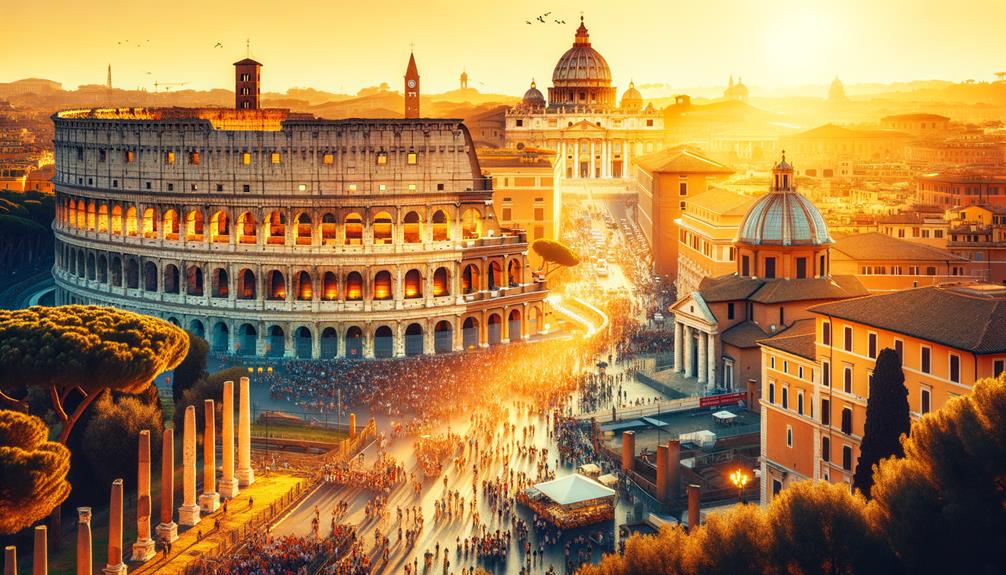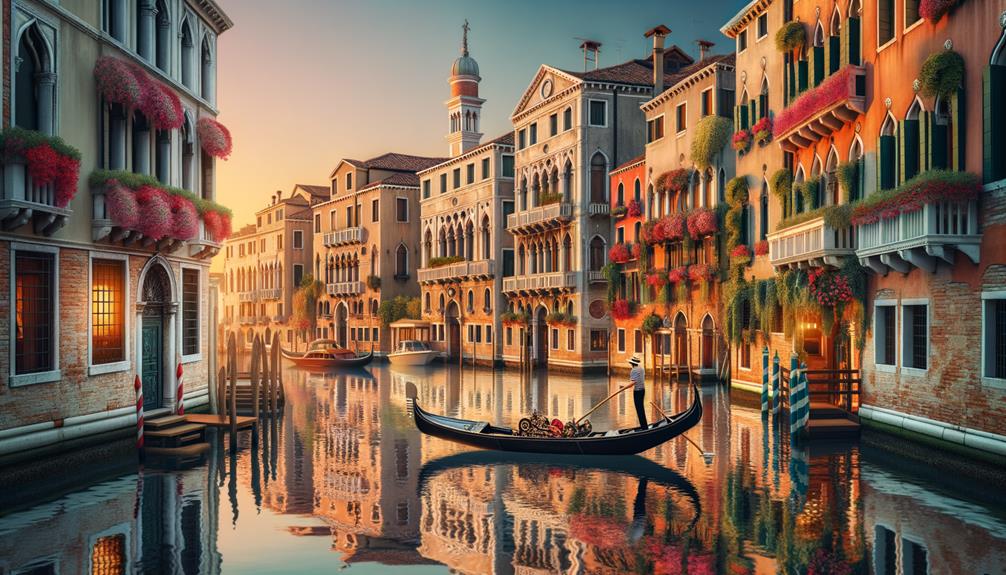In the heart of Florence, where art comes alive in stone and canvas, I found myself wandering through centuries of Renaissance brilliance. The Accademia Gallery's David is not just a statue but a testament to human potential. Each gallery, from the Uffizi's corridors to the grand rooms of Palazzo Pitti, reveals layers of history and creativity. Yet, it's not just the famous masterpieces that draw you in; even the quiet corners of the Church of Santa Croce and the peaceful Boboli Gardens hold their own secrets. What stories do these silent guardians of art share with those who take a moment to listen?
Accademia Gallery
The Accademia Gallery in Florence is a haven for Renaissance art, with Michelangelo's David as its standout piece. Walking through its halls, I was struck by the sheer brilliance on display. David, prominently positioned in a specially designed area, immediately draws the eye. The sculpture's detailed craftsmanship, from the tension in David's muscles to the resolve in his gaze, showcases Michelangelo's extraordinary skill.
However, there's much more to the Accademia Gallery than just David. It's a rich collection of Renaissance art, featuring works by Botticelli, Perugino, and Filippino Lippi. Each painting offers a glimpse into a past that celebrated human potential and creativity. The gallery's painting collection, in particular, captivated me, each piece acting as a window to a world of beauty and innovation.
Founded as an art school in 1784, the gallery's educational roots are still evident. The former convent and hospital complex, updated in the 19th century, adds to its unique charm and history. As I walked through its corridors, I felt deeply connected to the artistic spirit that has thrived here for centuries.
Uffizi Gallery
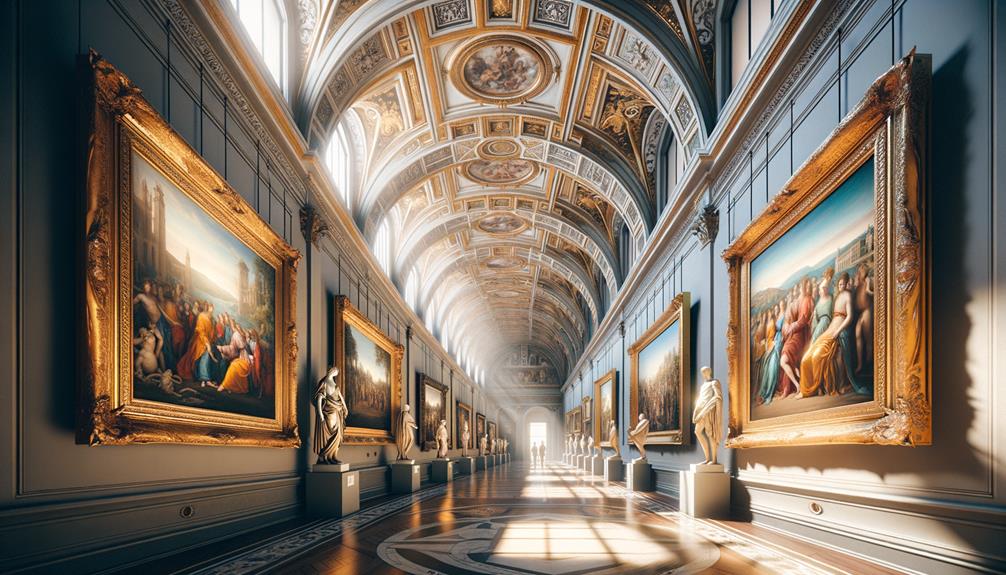
Walking into the Uffizi Gallery, I was immediately struck by a deep sense of history and artistic brilliance. The sheer volume of Renaissance art is absolutely stunning. As I meandered through the beautifully arched corridors, each room seemed to pull me further into a world where creativity and genius blended effortlessly.
Botticelli's masterpieces, like 'The Birth of Venus,' caught my eye. The vibrant colors and delicate figures felt almost otherworldly, as if they might step out of the canvas at any moment. Moving on, I encountered the intense drama of Caravaggio's works, with his use of light and shadow bringing each scene to life with incredible depth and emotion.
Every corner of the gallery revealed something new, from the serene beauty of Raphael's 'Madonna of the Goldfinch' to the detailed sketches by Leonardo da Vinci. I couldn't help but think about how these artists, centuries ago, captured the human experience so deeply. The Uffizi Gallery isn't just a collection of art; it's a testament to the enduring spirit of creativity that continues to inspire and move everyone who visits.
Duomo Santa Maria Del Fiore
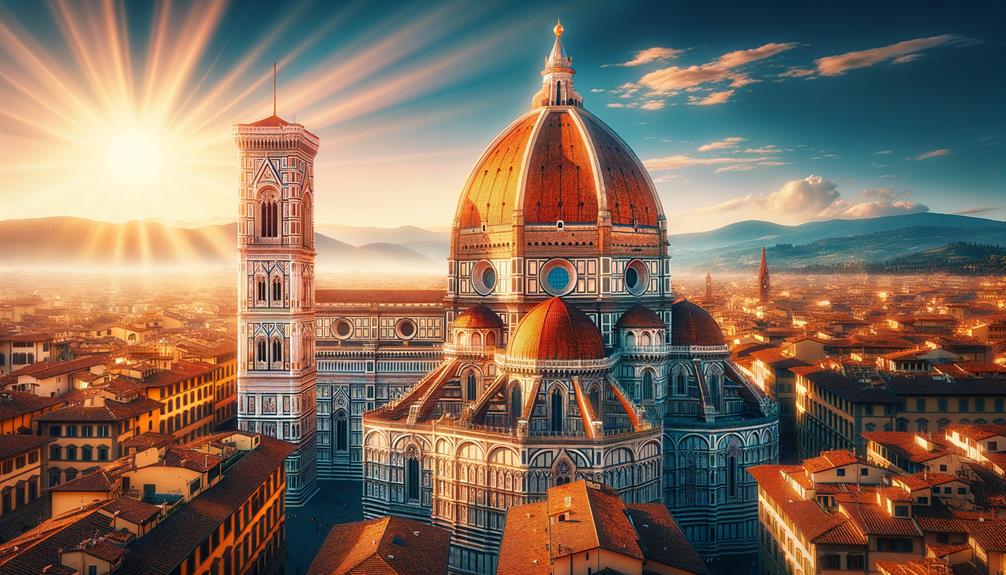
Standing in front of the Duomo Santa Maria Del Fiore, it's hard not to be amazed by its detailed Gothic architecture and the massive dome designed by Brunelleschi. Inside, there are incredible works of art, from Vasari's frescoes to the intricate stained glass windows. This cathedral is more than just a place of worship; it's a testament to human creativity and artistic achievement.
Architectural Marvels Explored
Looking up at the detailed dome of the Duomo Santa Maria Del Fiore, I'm amazed by Brunelleschi's engineering skills. The size and complexity of the structure are a true testament to human creativity and perseverance. Filippo Brunelleschi, the architect behind this incredible work, broke the norms of his time to create something that still draws people from around the world. His vision and ability to build such a grand design without modern tools leave me in awe.
As I walk around, I notice how beauty and function come together seamlessly. The octagonal shape, the herringbone brickwork, and the double-shell design are not just technical achievements but also artistic ones. Brunelleschi's impact isn't limited to the Duomo. A short walk away is the Pazzi Chapel, another one of his works. This smaller but equally striking building shows Brunelleschi's skill with proportion and geometry, offering a peaceful retreat in the busy city of Florence.
Thinking about these architectural marvels, I feel a deep sense of inspiration. They remind me of the limitless potential of human creativity and how, with vision and bravery, we can accomplish extraordinary things.
Artistic Masterpieces Within
Walking into the Duomo Santa Maria Del Fiore, the first thing that strikes me is the vibrant frescoes and intricate stained glass windows. The light streaming through the colored glass creates a beautiful pattern on the marble floor. Each fresco tells a unique story, pulling me deeper into Florence's rich art history. The talent behind these masterpieces is truly impressive.
The dome's grandeur is simply breathtaking. Designed by Brunelleschi, it stands as a testament to human creativity. Looking up, I see Vasari's 'Last Judgment,' a massive fresco that covers the dome's interior. The details are incredible, with angels and demons depicted in a chaotic yet mesmerizing dance.
Thinking about the Medici family, who supported so many artists contributing to this cathedral, I realize how crucial their patronage was in making Florence a hub of art. Walking through the Duomo, I feel connected to the past and free, as if art transcends time and space. This isn't just a church; it's a living art gallery, a sanctuary for the soul, and a celebration of human creativity.
Church of Santa Croce
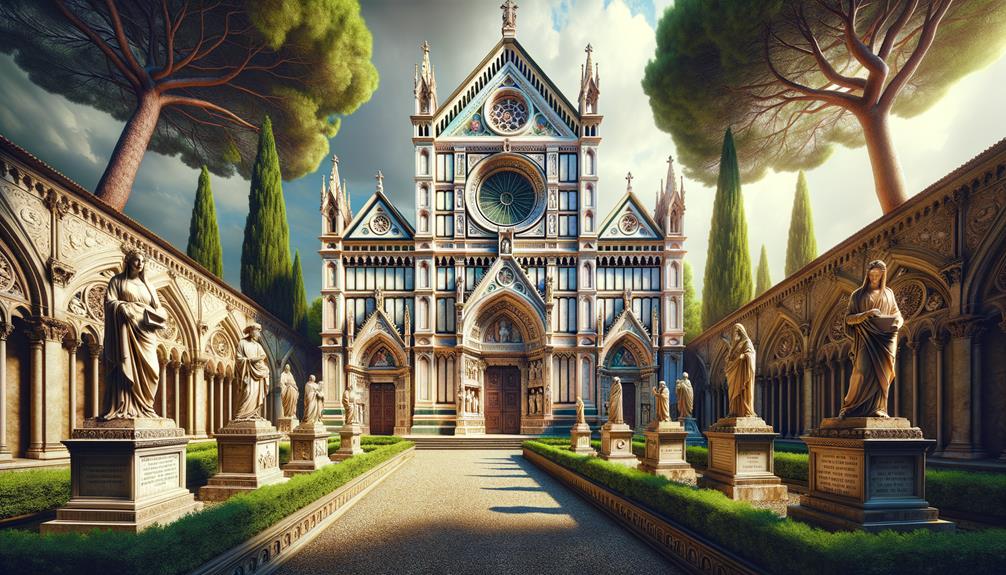
The Church of Santa Croce in Florence immediately grabs my attention with its detailed Gothic facade and rich history. Walking through its grand entrance, I'm filled with a sense of reverence and awe. Often called the Temple of the Italian Glories, this church is the final resting place for many of Italy's most famous figures.
The inside is a captivating mix of art and history:
| Artwork/Feature | Description |
|---|---|
| Michelangelo's Tomb | A tribute to the great artist. |
| Galileo's Tomb | Honors the pioneering astronomer. |
| Frescoes by Giotto | Beautiful depictions of biblical scenes. |
| Dante's Cenotaph | Highlights the revered poet's legacy. |
| Cloisters | Peaceful areas perfect for reflection. |
Each tomb and piece of art tells its own story, making me think about the incredible contributions these individuals made to the world. The air inside Santa Croce is thick with history, yet it also sparks a sense of curiosity and inspiration.
As I wander through Santa Croce, I'm struck by how seamlessly art and legacy come together. It's a place where time feels like it stands still, letting me fully soak in Florence's rich artistic heritage.
Bargello Museum
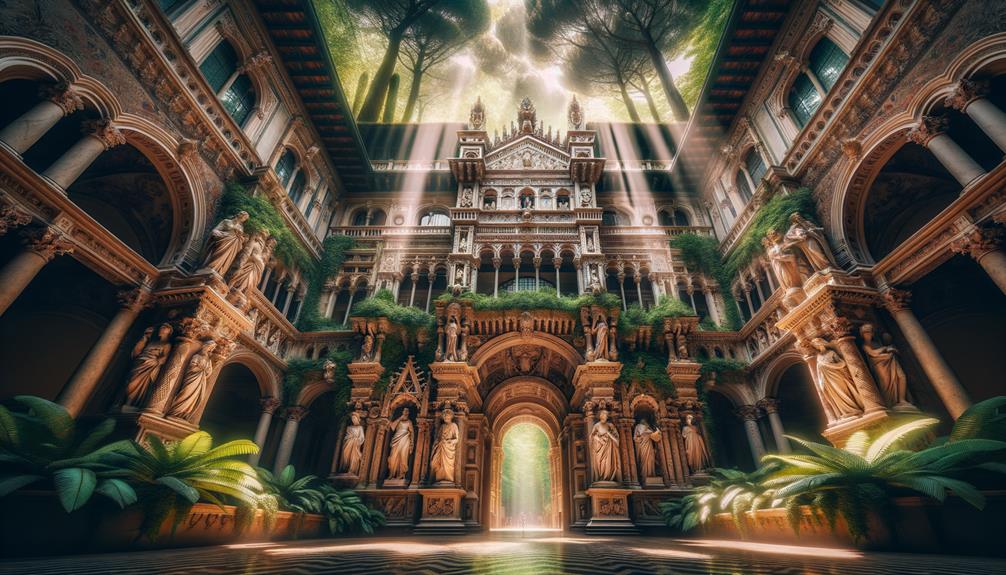
Walking into the Bargello Museum, I'm struck by its impressive medieval architecture and the anticipation of seeing Renaissance sculptures up close. Located in Florence's historic center, the museum was once a prison and the home of the city's chief magistrate. The stone walls and grand arches seem to tell stories from centuries ago, and I feel a strong connection to the past as I move through its halls.
The museum's collection celebrates the artistic achievements of the Renaissance, with pieces that leave a lasting impression. Highlights include works by Donatello and Michelangelo, each showcasing their incredible skill and creativity. I stand in awe before Donatello's bronze statue of David, a symbol of the Medici family's support of the arts.
- Michelangelo's Bacchus: A striking sculpture capturing the god of wine in a moment of indulgence.
- Ghiberti's St. John the Baptist: An exquisite bronze statue that once adorned the Baptistery doors.
- Cellini's Bust of Cosimo I de' Medici: A lifelike representation of the influential ruler.
Every corner of the Bargello Museum tells a story, inviting me to delve deeper into Florence's rich artistic heritage.
Palazzo Pitti
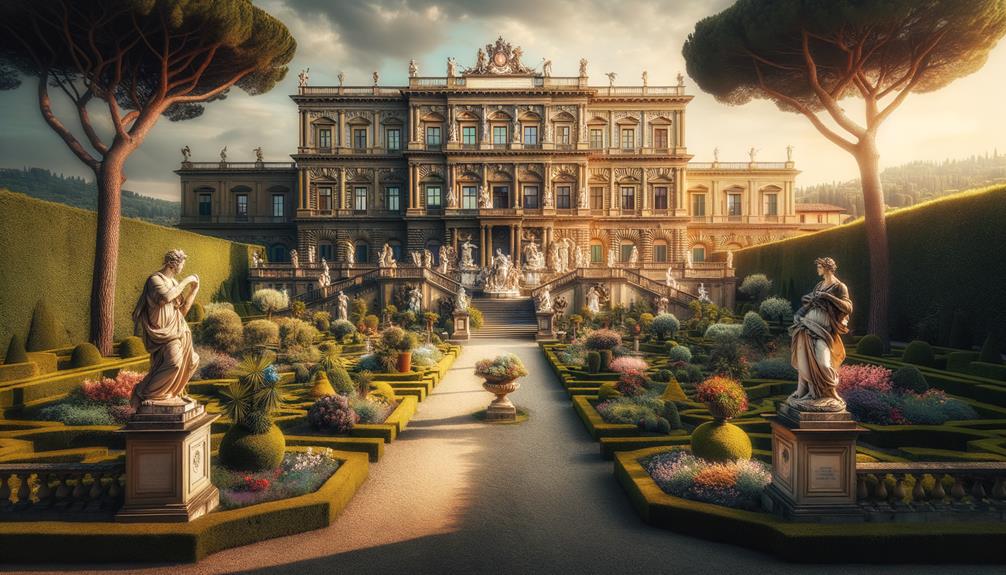
Stepping through the grand entrance of Palazzo Pitti, I'm struck by the size and splendor of this historic Renaissance palace. Originally built for the Pitti family in the 15th century, it later became the main residence of the influential Medici family. Located in the charming Oltrarno district, near the famous Ponte Vecchio, the palace's grandeur is obvious.
Inside, there are numerous museums and galleries to explore. The Palatine Gallery, filled with beautiful Renaissance art, and the Royal Apartments, which highlight the lavish lifestyle of Florence's rulers, are particularly impressive. The Gallery of Modern Art provides an interesting contrast with its display of more contemporary works.
The palace's architecture is a blend of Renaissance and Baroque styles. Wandering through the ornate courtyards and grand halls, the intricate frescoes by Pietro da Cortona in the Sala di Bona left me in awe.
| Gallery/Museum | Highlights |
|---|---|
| Palatine Gallery | Renaissance art |
| Royal Apartments | Lavish decorations |
| Gallery of Modern Art | Contemporary pieces |
| Sala di Bona | Frescoes by Pietro da Cortona |
With its rich history and stunning art, Palazzo Pitti is a must-visit for anyone interested in Florence's artistic treasures.
Boboli Gardens
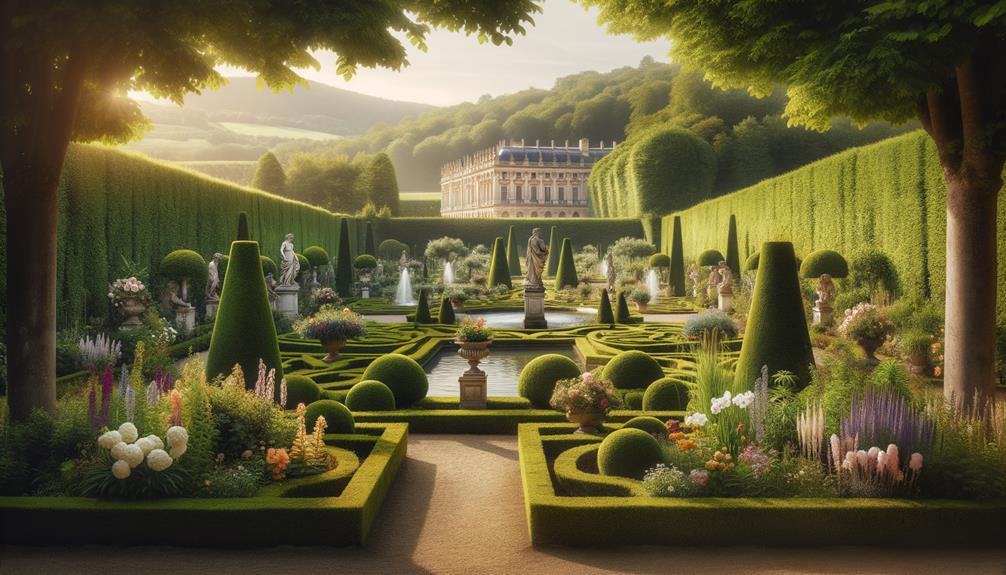
After touring the lavish rooms of Palazzo Pitti, I can't wait to step outside and enjoy the peaceful Boboli Gardens. Located right behind the palace, these gardens provide a calm retreat, a nice break from the palace's elaborate decor. As I walk through the winding paths, I'm amazed by the creativity and effort that went into designing these grounds during the Medici era.
The gardens feel like a living artwork, offering:
- Breathtaking views of Florence, with the famous Palazzo Vecchio standing out in the distance.
- Secret grottos and fountains, each showcasing the Renaissance blend of natural beauty and human talent.
- Statues and sculptures, scattered throughout, each telling stories of a past era.
Every corner brings a new view, a fresh scene that sparks the imagination. The play of light and shadow, the sound of leaves rustling, and the soft murmur of water create a peaceful and reflective atmosphere. Here, I feel a sense of freedom and a connection to history that goes beyond time, allowing me to truly appreciate the Medici family's lasting influence on Florence.
Piazza Della Signoria
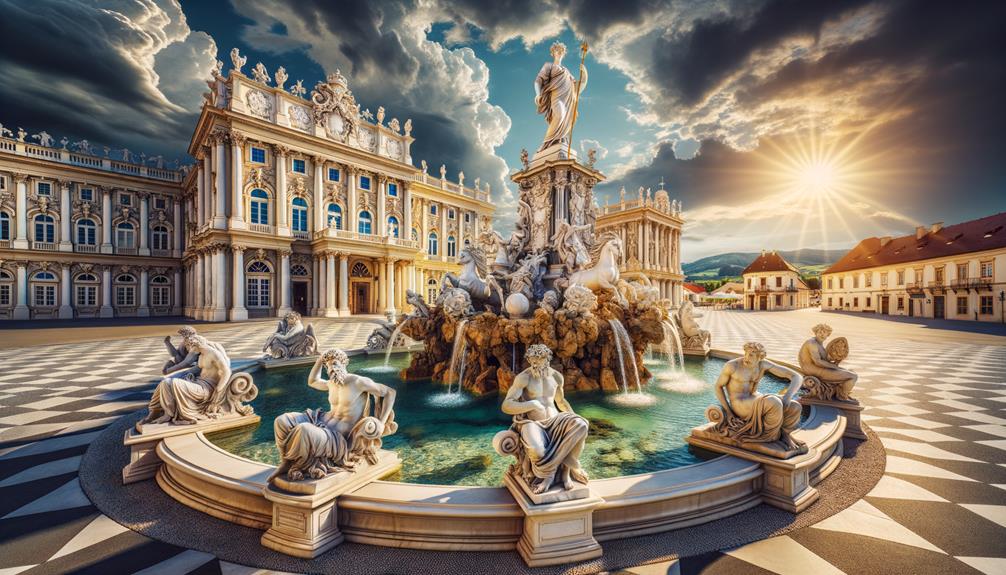
When I step into Piazza Della Signoria, the grandeur and history of the place immediately hit me. Every corner is filled with stories from Florence's vibrant past. The statues and buildings here are more than just art; they hold narratives waiting to be uncovered.
The Palazzo Vecchio stands tall over the square, symbolizing centuries of political intrigue. To my left, the Loggia dei Lanzi showcases an impressive open-air gallery. Each sculpture, from Perseus with the Head of Medusa to the Rape of the Sabine Women, seems to capture a moment in time. The detail is incredible, and I feel a deep connection to the artists who crafted these masterpieces.
| Landmark | Description |
|---|---|
| Palazzo Vecchio | Historic town hall, towering over the square. |
| Loggia dei Lanzi | Open-air sculpture gallery with iconic statues. |
| Neptune Fountain | Stunning fountain centerpiece by Bartolomeo Ammannati. |
| Uffizi Gallery | Renowned art museum, just a stone's throw away. |
As I wander further, I come across the Neptune Fountain, a striking figure that reminds me of Florence's maritime history. Nearby, the Uffizi Gallery calls out, promising even more artistic treasures. Piazza della Signoria isn't just a place to visit; it's a deep dive into Florence's rich cultural and artistic heritage.
Frequently Asked Questions
What Happened to the Art Treasures of Florence After the War?
After the war, Florence's art treasures were carefully restored and returned to their original locations. Witnessing this felt like the city was experiencing a rebirth, with each piece representing resilience and hope after years of hardship.
What Is Florence Most Famous Artwork?
Florence's most iconic piece of art has to be Michelangelo's David. Standing in front of this 17-foot marble masterpiece, you can't help but be amazed. Every muscle and vein in his defiant pose captures a perfect moment of courage and strength.
Why Is Florence the Art Capital of the World?
Florence stands out as the art capital of the world because it houses a remarkable 60% of the most important artworks. Its rich Renaissance history and the support from the Medici family have turned the city into an unmatched cultural center.
Who Was the Wealthy Patron of the Arts in Florence?
The Medici family was the rich supporters of the arts in Florence. It's amazing how their backing, particularly from Cosimo and Lorenzo, turned the city into a Renaissance treasure, funding works that still fascinate us today.


